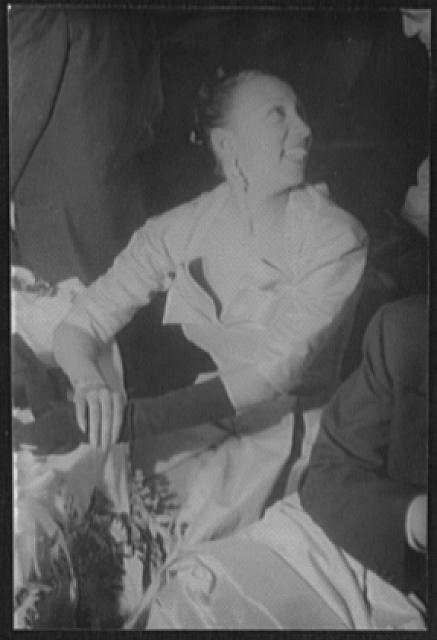Josephine Baker Is Dead in Paris at 68
April 13, 1975
PARIS, April 12—Josephine Baker, the American dancer, and singer who became one of France's great music‐hall stars, died early today in the Salpetriere Hospital. She was 68 years old and suffered a stroke Thursday, four days after opening a new revue celebrating her 50 years as an entertainer.
Eleven of Miss Baker's 12 adopted children are in Monaco, and the other is reported to be abroad.
Her former husband, the bandleader Jo Bouillon, is reported to have said he would fly here to attend the funeral,
to be held Tuesday at the Church of the Madeleine.
A Skirt of Raman
Josephine Baker went to Paris in 1925, tied a string of bananas around her waist, and became first a local and then an international sensation.
Of the entertainer's electrifying opening night in 1925, Janet Flanner wrote in “Paris Is Yesterday,”
published by the Viking Press in 1972:
“She made her entry at the Theatre des Champs‐Elysées entirely nude except for a pink flamingo feather between her limbs; she was being carried upside down and doing the split on the shoulder of a black giant.
Midstage he paused, and with his long fingers holding her basket‐wise around the waist, swung her in a slow cartwheel
to the stage floor, where she stood, like his magnificent discarded burden, in an instant of complete silence.
She was an unforgettable female ebony statue. A scream of salutation spread through the theatre.
“Whatever happened next was unimportant. The two specific elements had been established and were unforgettable
— her magnificent dark body, a new model that to the French proved for the first time that black, was beautiful,
and the acute response of the white masculine public in the capital, of the hedonism of all Europe—Paris.
“Within a half hour of the final curtain on opening night, the news and meaning of her arrival had spread
by the grapevine up to the cafes on the Champs‐Elysées, where the witnesses of her triumph sat over their drinks
excitedly repeating their report of what they had just seen. . . .
Somewhere along the development, either then or it might have been a year or so later, as Josephine's career ripened,
she appeared with her famous festoon of bananas worn like a savage's skirt around her hips.
She was the established new American star for Europe.”
Introduced ‘Le Jazz Hot’
Miss Baker brought “le jazz hot” to Paris and was the personification there of black talent and modern black music.
She led a long line of black American artists to Europe, mostly to Paris, where they sought,‐ in her word, “freedom.”
Asked many decades later if she had indeed found freedom in France, she said,
“Yes, more or less, as an artist, as a human being.”
Despite her success and love for France — she became a French citizen in 1937 — she never forgot her experiences with discrimination in the United States and never ceased her outspoken criticism.
She once told a Danish radio interviewer:
“I was born in America [June 3, 1906] and grew up in St. Louis. I was very young when I first went to Europe.
I was 118 years old. But I had to go. I wanted to find freedom. I couldn't find it in St. Louis, of course."
“It was one of the worst cities in America for racial discrimination.
I hear it has changed, but I have never been there since. I have very bad memories of that time.”
The French applauded Miss Baker not only as a performer but also for her World War II activities.
She served as an ambulance driver, intelligence agent, and entertainer with the Free French Air Force in North Africa.
She was awarded the Croix de Guerre and the Legion of Honor with the Rosette of the Resistance.
“France made me what am,” she said. “They gave me their hearts. Surely I can give them my life.”
Adopted Orphans
In the nineteen‐fifties, Miss Baker adopted a dozen orphans of various nationalities, races, and religions, including a Korean,
a Finn, an Israeli, a Venezuelan, an Algerian, a Japanese, and a Colombian. All became French citizens by their adoption.
She called them her “rainbow tribe,” and lived with them, in a chateau, Les Milandes,
in the Dordogne Valley in Southwestern France.
The 300‐acre estate, which she purchased in 1939, was the centerpiece of a resort she tried to build.
The project included a hotel, restaurant, swimming pool, theater, and golf and tennis facilities.
But the cost of the project, along with the upkeep of her chateau and her adoptive family, outstripped her fortune
and led her into debt. Her property and belongings were sold at auction in 1969, and Miss Baker had to be carried out
into the rain by gendarmes.
Financial help from friends, such as Princess Grace of Monaco, and her own return to the stage,
enabled Miss Baker to buy a $100,000 Rivera villa at Roquebrune‐Cap‐Martin.
The young Miss Baker arrived in New York from St. Louis in the early nineteen-twenties and was a chorus girl
in the revue “Shuffle Along,” which ran for three years at Daly's on 63d Street.
She also appeared at the Cotton Club in Harlem.
She went to Paris in “Lai Revue Negre,” in which she scored her overnight triumph.
The show starred Florence Mills and Sidney Bechet, the jazz soprano saxophonist.
It was in the following year that Miss Baker became a star herself, heading a revue at the Folies Bergere.
There, wearing her skirt of bananas, she danced the Charleston for the Parisians.
To the French public, she was first “La Ba‐kair” and then simply “Josephine.”
She had difficulty in negotiating her French “R,” which lent a charming lisp to her French.
Through the use of a rhinestone microphone and with the movements of her sleek body,
she“ could hold an audience entranced.
Her onstage character changed with the years. At the outset of her long French career, she represented Jazz Age Harlem.
Then she graduated to Creole and later to Tonkinese, or something vaguely Oriental, with pagoda headdresses.
Beneath them, her oval face looked like a temple sculpture.
In 1930 she first sang a plaintive song by Vincent Scotto, “J'ai Deux Amours” (I Have Two Loves”)—
the two loves begin as “my country and Paris.”
Introduced in the Casino de Paris revue “Paris qui Remue,” the song became her musical signature.
In the late twenties and through the thirties, she starred annually in revues either at the Folies Bergere
or at the Casino de Paris, becoming not only a familiar symbol of the French music halls of the period,
but also probably the outstanding popular performer of those years.
She came to Broadway in 1936 for the “Ziegfeld Follies” under the direction of John Murray Anderson.
The former “Shuffle Along” chorus girl now exuded Parisian chic and never wore the same gown twice during the show's run. She then toured the United States, packing theaters across the country for a season.
In New York, she had her own nightclub, called Chez Josy Baker.
In 1951 she visited New York again. During her stay, she charged that she had been a victim of discrimination
at the Stork Club. She and her friends, she complained, had been served food and drink only after a long delay.
The incident created wide publicity.
In 1958 she returned to the Paris stage with success in a musical autobiography, “Paris Mes Amours,”
which traced her career from her St. Louis beginnings to her conquest of Paris.
Miss Baker made triumphant return visits to perform in the United States in the last two years.
She appeared at Carnegie Hall and at the Palace Theater in “An Evening With. Josephine Baker.”
She was elegantly costumed, as usual, and reviewers described her as being in a fine voice.
Her marriage in the twenties to Count Heno Abatino, an Italian painter, ended in divorce.
In 1935, she was married to Jean Lyon, a French industrialist, and they were divorced in 1940.
Her next marriage was to Mr. Bouillon, a jazz orchestra leader, from whom she had been separated since 1957.
ADVERTISEMENT
BY
Looking for more information?

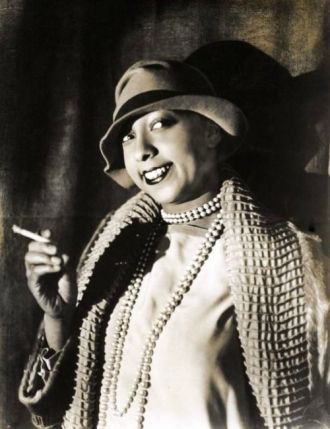
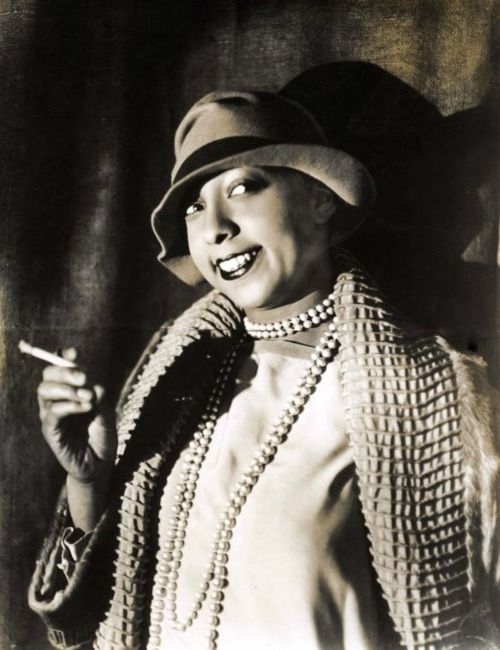
 Kathy Pinna
Kathy Pinna 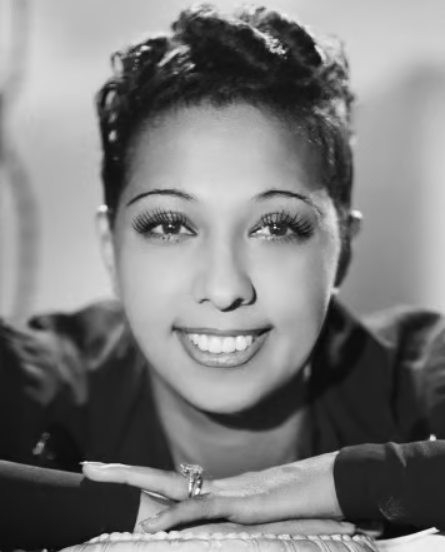
 Amanda S. Stevenson
Amanda S. Stevenson 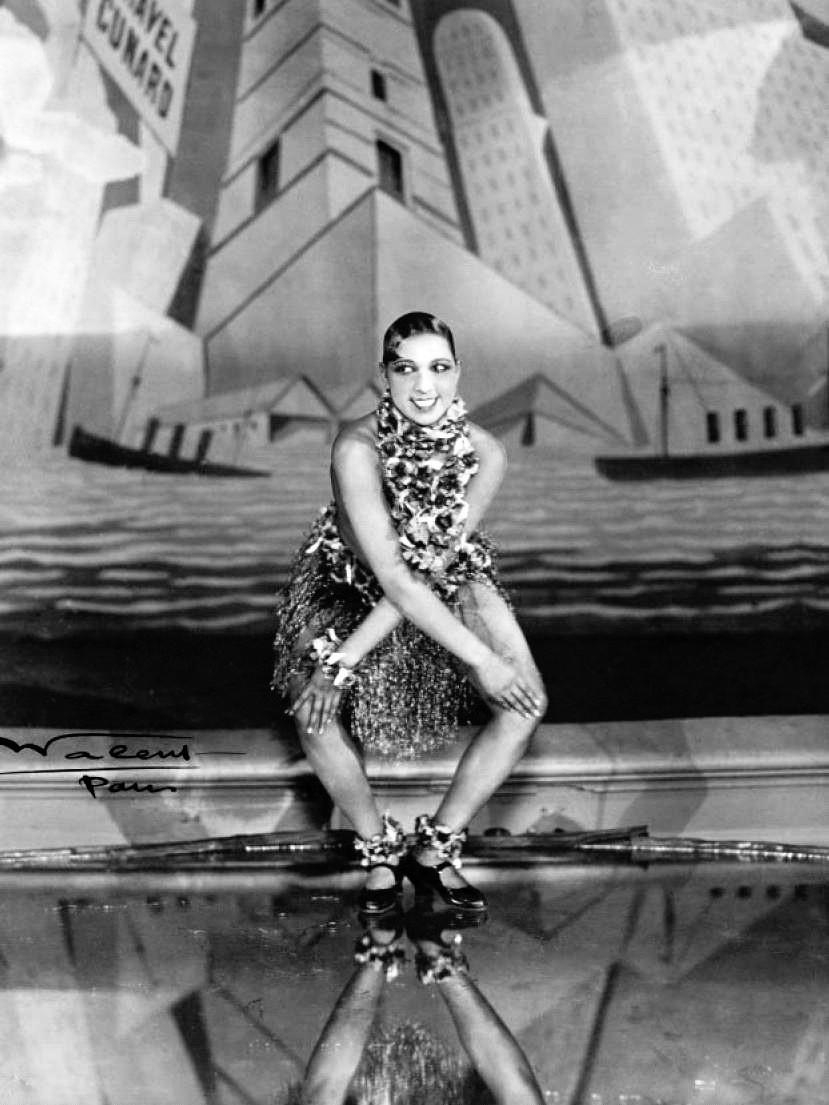
 Kathy Pinna
Kathy Pinna  AncientFaces
AncientFaces 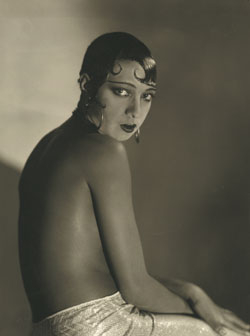
 Daniel Pinna
Daniel Pinna 